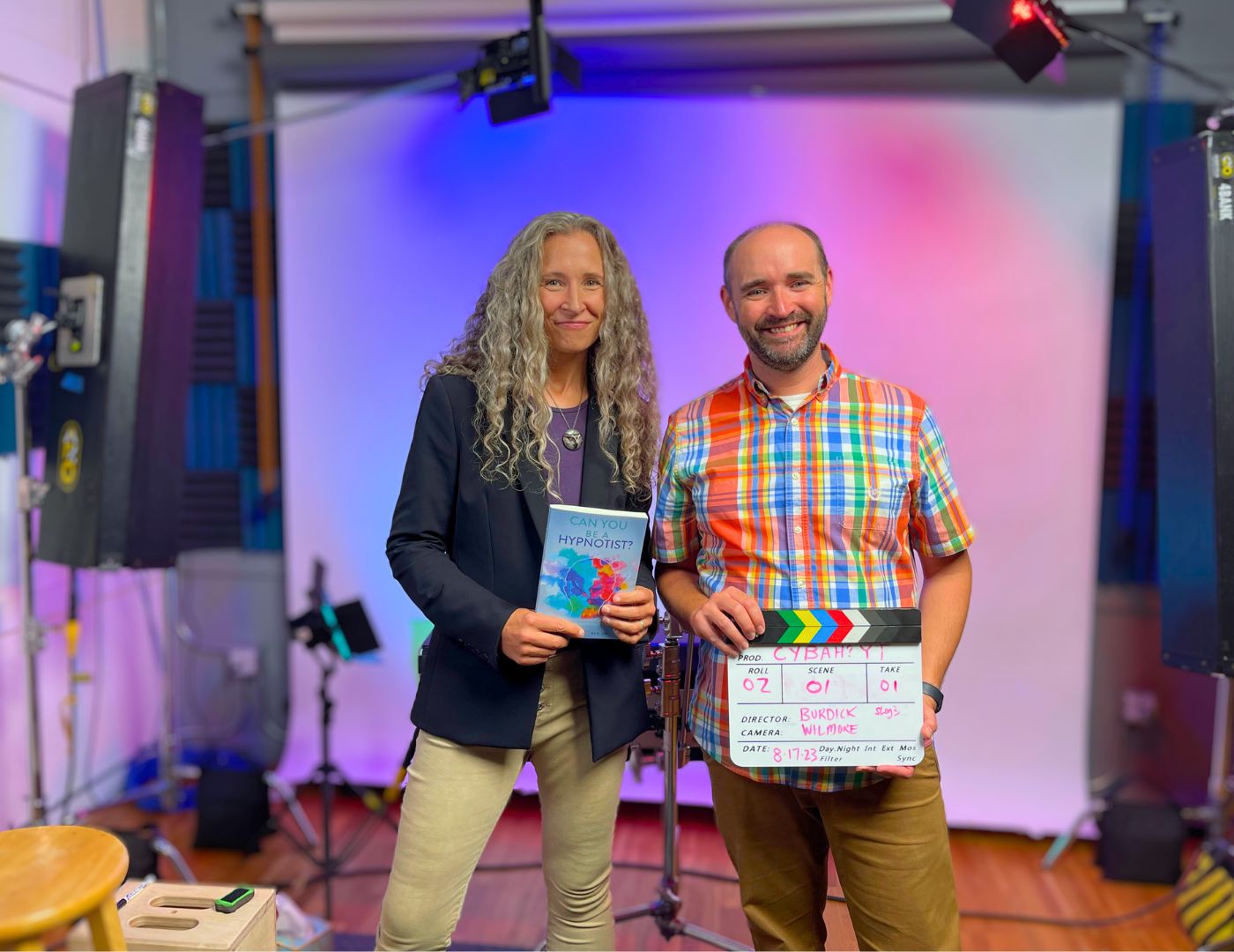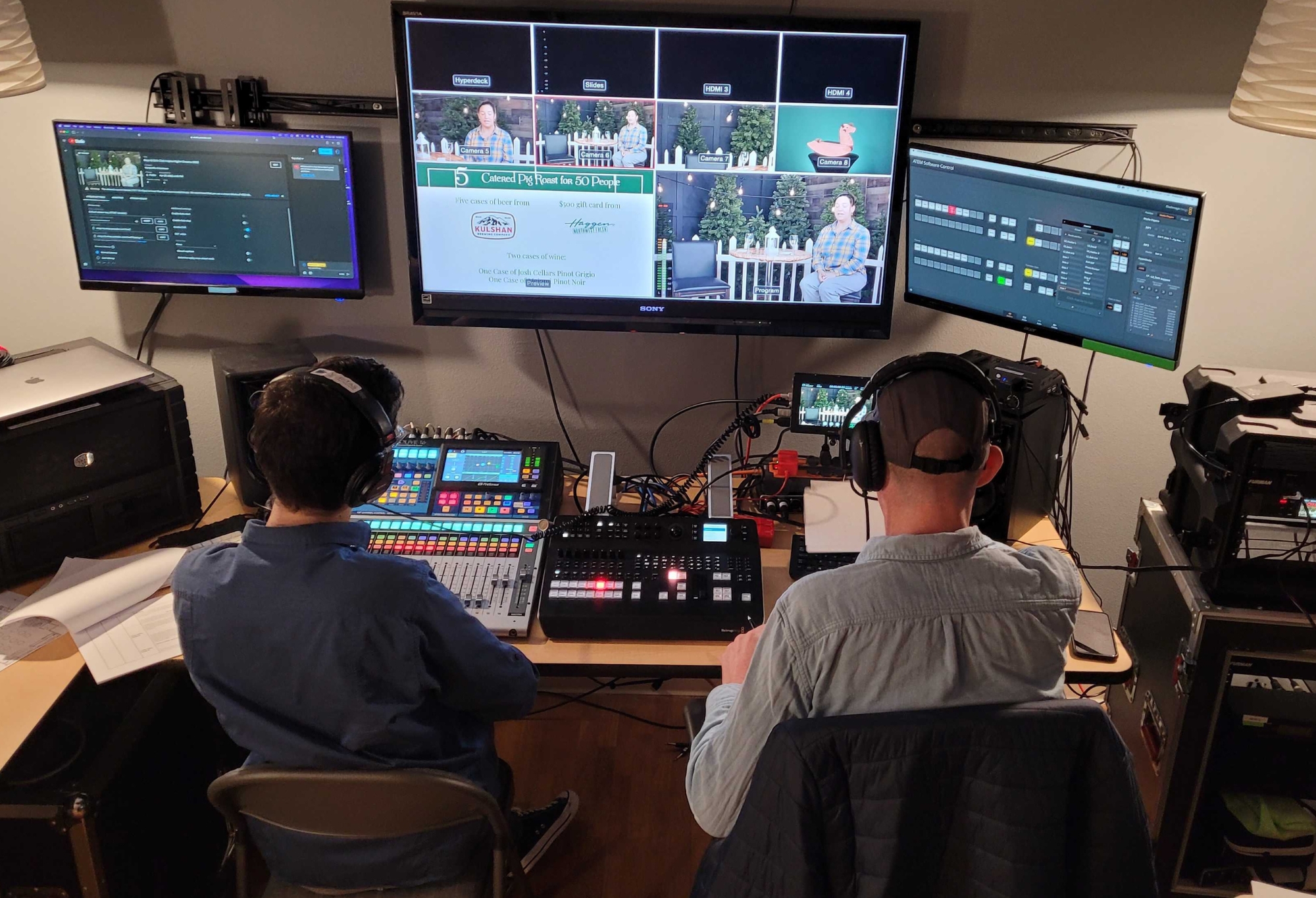If you had any event, conference, gala, or auction scheduled in 2020 or 2021 you’re no doubt looking at different options for continuing to put on a meaningful and successful event. We’ve seen and studied a lot of virtual events over the last 9 months and we’ve learned a lot.
One of the biggest decisions you will need to make in planning your virtual event is if you want your event to be live streamed or a scheduled and pre-produced program that premieres at a specific time. Both have advantages and disadvantages and I’ll walk through both options below.
What is live streaming?
Live streaming is essentially video content not previously recorded that is broadcast out in real-time to an online audience. Organizations in every industry are turning to live streaming to reach more of their audiences. Live streaming of church services, auctions, conferences, seminars, fundraisers and company meetings are among the biggest users of live streaming.
There are a lot of ways that viewers engage with live streaming, but the most popular platforms are YouTube, Facebook, and Vimeo. Each platform offers its own set of features and it’s possible to send the same stream out to multiple platforms at a time (this is called simulcasting).
Many people are familiar with Facebook Live and the experience of “going live” from a mobile device. In the professional event world, virtual event producers have access to a wider range of tools (software and hardware) that allow for professional cameras and audio to be used. These tools also allow for the use of pre-produced video content that can be queued up to play during the live stream.
Benefits of live streaming
- Higher level of trust: The biggest advantage of live streaming is that you’re presenting yourself or your company in the moment. Doing so results in a highly authentic and “natural” experience for your viewers.
- Engage your audience in real-time: When you live stream you can tap into other tools beyond streaming audio and video to increase audience interaction. Features like live chat, polling, Q&A, auction portals, breakout rooms or watch parties all add an interactive element to your event and give you instant insight into how your audience is responding to the content you create.
- Reach more people than traditional in-person events: no longer is your event limited to the people in your geographical region that can physically attend your event. If you do good work in marketing and promoting your live streamed event, there’s a good chance you’ll enjoy larger audience. The more novel and exclusive the event
- It’s impressive: a well executed live streamed event will leave your audience feeling like they got incredible value and enjoyment out of what they just watched—that it was an experienced tailored for them where they’re at.
- Boost for auctions and fundraisers: Live streaming works well when you have another activity like an auction happening in real time. While
Drawbacks to live streaming
- You’ve got one shot: In live streaming there are no re-dos, you get what you get and if their are flubs in your emcee or auctioneer’s performance, you have to roll with it.
- Audience Attendance: Your audience may be limited and many live stream events have lower than desired turnout. Your event will be competing for your audience’s attention, time and schedule. You can produce the best looking live stream in the world, but if that new Netlix series drops at the same time, the Seahawks are playing, or it’s an incredibly nice evening you might have trouble getting people to sit down to watch your event. If you go the live stream route, make sure you have a plan to promote the event early and often to ensure the highest attendance possible.
- Cost: Live streaming is often more expensive than other forms of video production. Going live requires a full dedicated team to make sure that nothing is missed and that your event goes off without a hitch. It also requires rehearsal time and more work on planning to make sure everything goes smoothly.
- Quality: Live streaming in re-time requires that the video feed be compressed quickly to send out to viewers. Most streaming platforms stream in 720p — this is certainly quality enough to enjoy the experience, but if you compare the live stream video with the same content that isn’t live streamed the picture quality will be much higher (HD or 4K video resolution and far less compression)
- Latency: another drawback to live streaming is that not everyone in your audience will have the same experience viewing the event. The biggest performance issue with live streaming events is what is know as “latency”—the time delay from when the subject on camera says something and when the viewer actually sees it. Latency makes it difficult to have any kind of precise audience interaction (e.g., bidding on live auction items). Most of the time you can expect there to be anywhere between 2 and 20-seconds of latency in a live stream.
Examples of live streaming content
Each of the following events were broadcast live. Many of the events that Veritas Media produces contain pre-produced segments to add breathing room to the live portions of the event. Note the different styles used in each live stream. Each of these events also used a third party auction site to host their auctions.
What is a Scheduled/Premiered Event?
A premiered event is programming that is entirely produced, shot, and edited before it is published. There is nothing spontaneous about this type of event and nothing happens in real time. You basically upload the finalized video file and schedule it to play at a specific date and time.
Even though you’re not live streaming, you can still engage in some of the features of a live stream by creating a “Premiere Event.” Just like the first screening of a blockbuster movie (remember those?) you can promote the Premiere time and give viewers the opportunity to be the first to see the program you’ve produced. If you use a platform like YouTube Premiere the audience doesn’t have the option to rewind or skip ahead in the video until after the full program. This allows you to set up a live chat that can be moderated during the first playback. After the Premiere you can choose how you want to share the content with your audience—in most cases it becomes a publicly findable video that anyone can watch.
Benefits of Premiering a video
- Less stress: Producing a live stream event can be stressful, even with a great team. There is pressure involved in bringing all the pieces together to pull it off. WIth Premiered events the production team does the heavy lifting and delivers the final product with plenty of lead time before your scheduled event. The night of the premiere you can be more engaged with interacting with viewers, and enjoying the experience you’ve created!
- Maximum control: through the planning, filming and editing process you have complete control over the content and experience and an opportunity to review all content before it ships.
- More voices: It’s difficult in a live stream to include lots of different perspectives and voices—especially during COVID-19 where social distancing and occupancy requirements affect how many people can appear together.
- Higher production value: While you can get high production value in a live stream event (especially if you include pre-produced content), Premiered content allows you to introduce more complicated and dramatic segments that would be difficult or extremely costly to do live. You also get the advantage of presenting your content in 1920×1080 HD or 4K resolution (unlike 720p that you get with live streaming)
- Better evergreen content: a lot of live streamed events are purpose designed to play once to a limited audience. With well designed Premiered content you can create something that will have a longer shelf life and continue advancing your goals long after the first scheduled viewing.
Drawbacks of Premiered Content
- No real-time connections with Audience: while you still have the ability to chat live with viewers during a Premiered event, you don’t have the same engagement tools available to interact with you audience. You can’t create polls, take questions (and respond to them) or otherwise interact with your audience. The pre-produced content is static and can’t change during the broadcast.
- Not usually ideal for auctions: because of the static nature of Premiered content, you can’t really have an auctioneer giving real time updates on items or fundraising progress. And, by the time some people watch the video it may be weeks after the auction and the information presented in the video irrelevant. Auctions aside, Premieres are still great for general asks and Calls to Action for fundraising campaigns.
- Less novel: Everyone has watched videos on YouTube. Just because it’s scheduled and set to Premiere doesn’t really make it that novel or impressive (though there are ways to create a highly engaging experience to counter act this).
- Not available on all platforms: Premiering content is available primarily on YouTube and Facebook. It might not be possible to Premiere the video on other platforms like Vimeo, Wistia or more custom players. However, you can always upload the video to other platforms after the initial premiere.
Examples of “Premiered” Content
The following videos (and series) were all fully produced and delivered before being uploaded and scheduled.
Bellingham School District Graduations
Skookum Kids: Eat, Drink, and Be Giving
The Hybrid Event
One approach we’ve seen work well is creating a hybrid event. By pre-producing large portions of an event you can Premiere the video to a large audience, but offer a smaller intimate experience for VIPs. A good example of this technique is Lydia Place’s Handbags for Housing 2020. Lydia Place chose to launch their virtual event as a Premiered video on YouTube with a companion VIP Zoom experience. Event attendees who bought a VIP package received a box with all kinds of goodies and swag from sponsors. They also got access to a VIP exclusive Zoom room hosted by the emcee for the event. The VIP Zoom experience included networking, games and a first look at all of the items being auctioned. The program feed that general attendees were seeing on YouTube was broadcast through the hosts’ Zoom account creating an exclusive event experience for VIPs.
What’s best for you?
As you can see, there is a lot to think about as you plan your virtual event. Start by asking yourself what your goals are and how important real time viewer engagement is. Both live streaming and Premiered events can create incredible experiences for your viewers.
If you have questions about live streaming or pre-produced content check out our other resources like our Virtual Events page. Our team is also happy to talk with you about what might work best for you given your goals and challenges.
Time spent in planning and “pre-production” before the cameras roll is the most important part of the video process. You should cringe when someone says, “fix it in post.” Trying to fix your script in the edit, or worse, during your studio session is unproductive and time-consuming. We’ve seen it happen, and it’s not a […]





